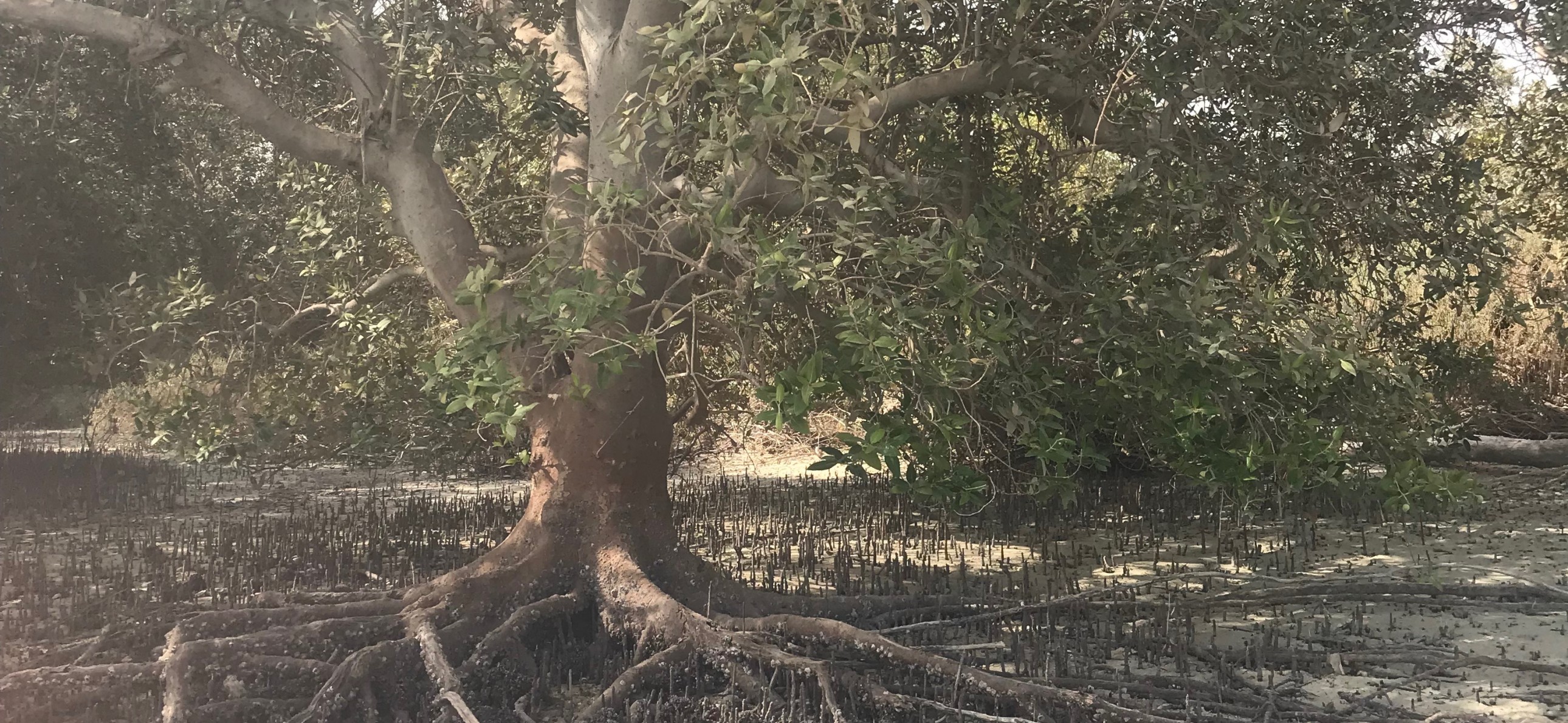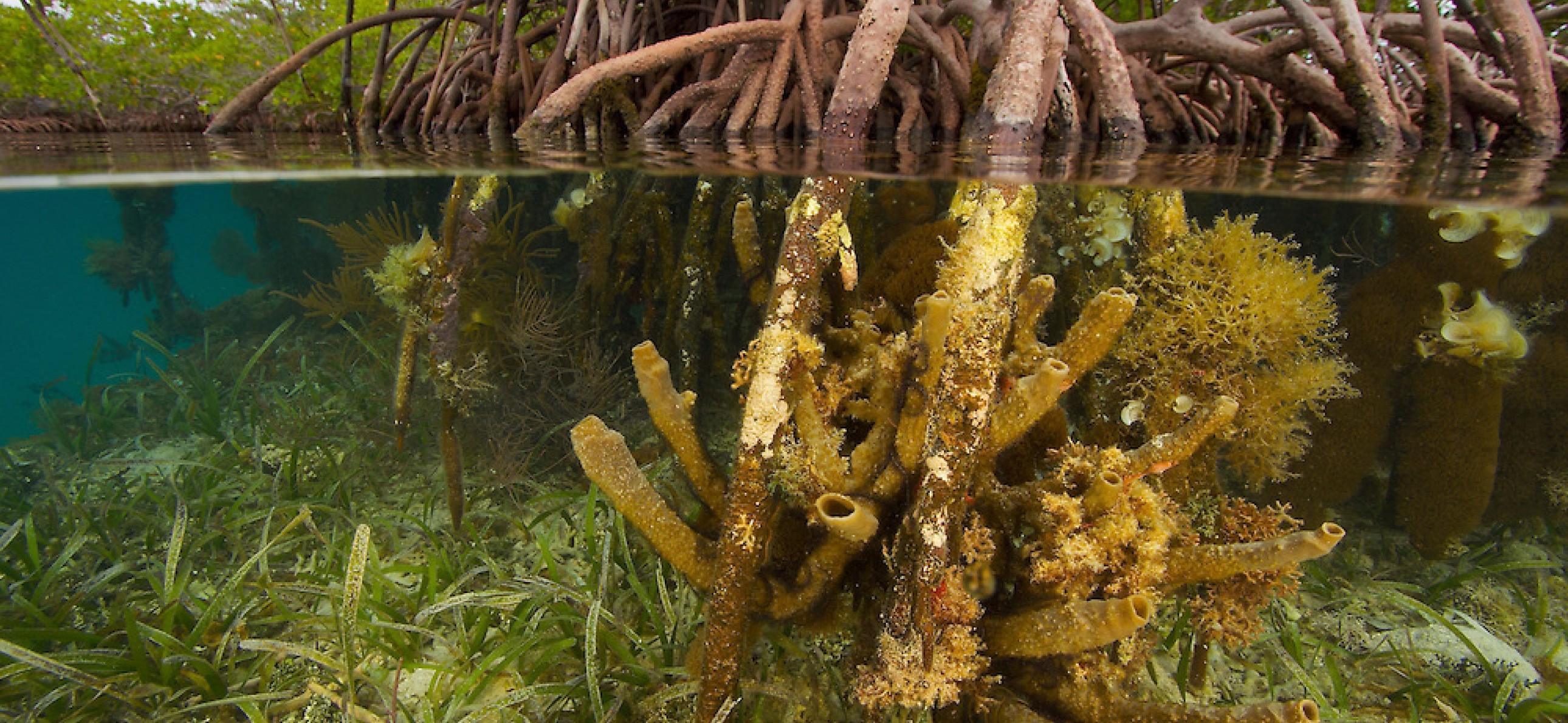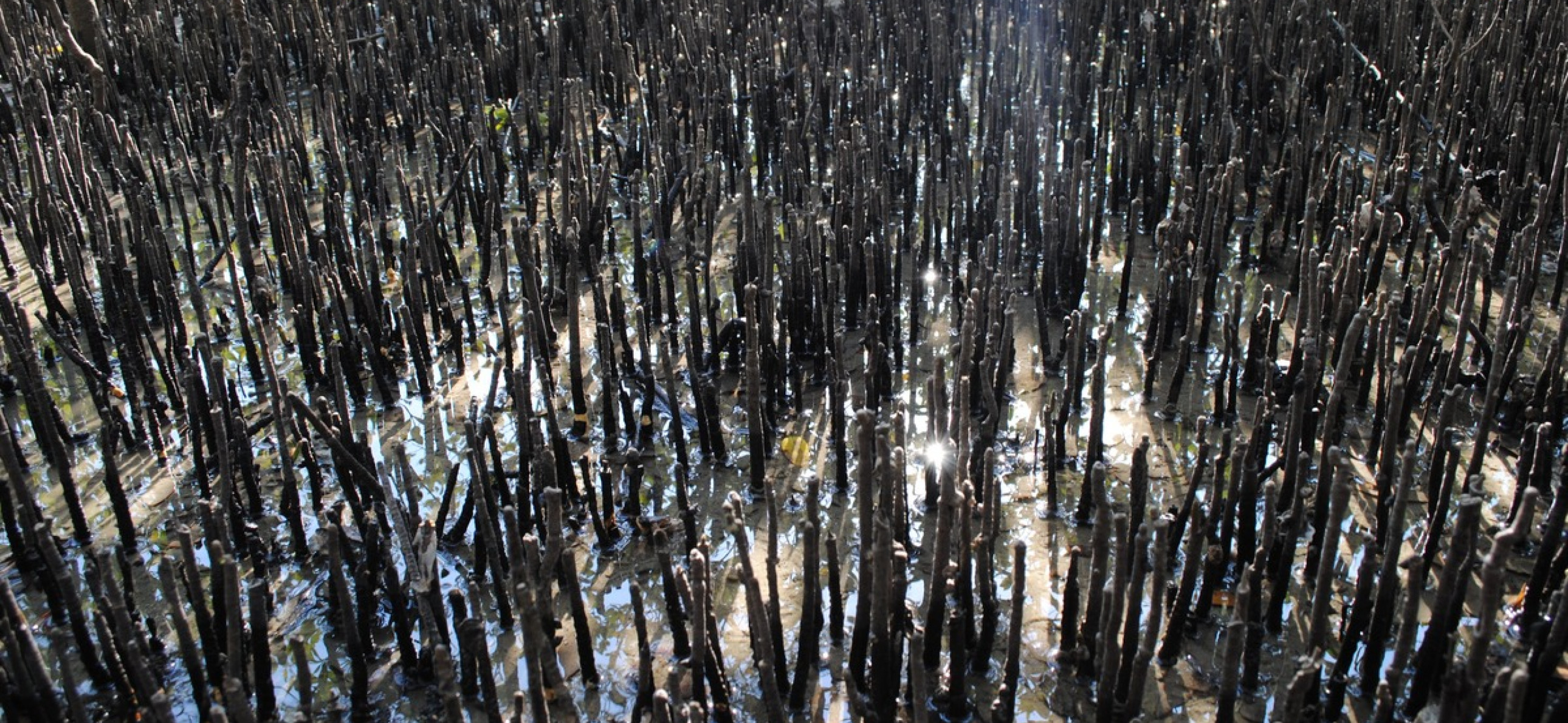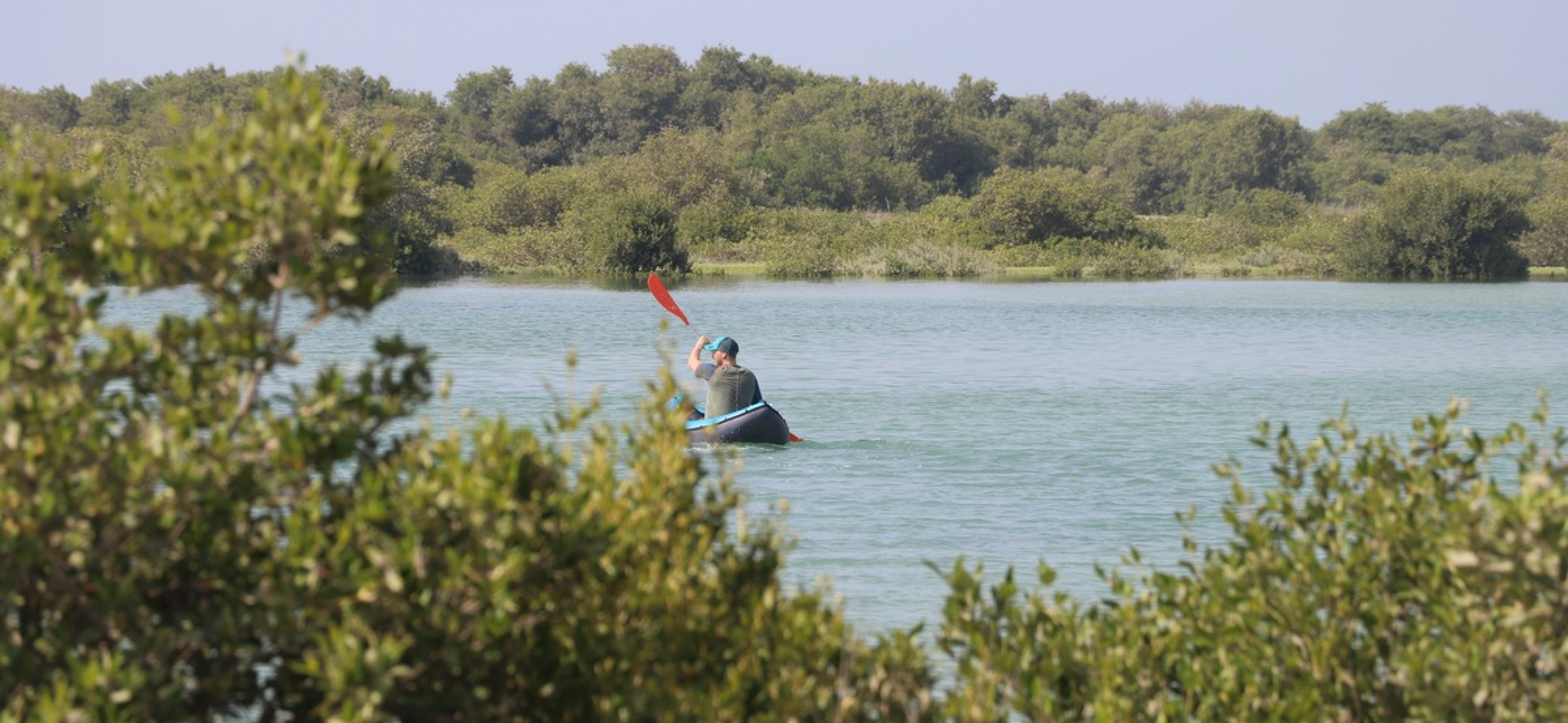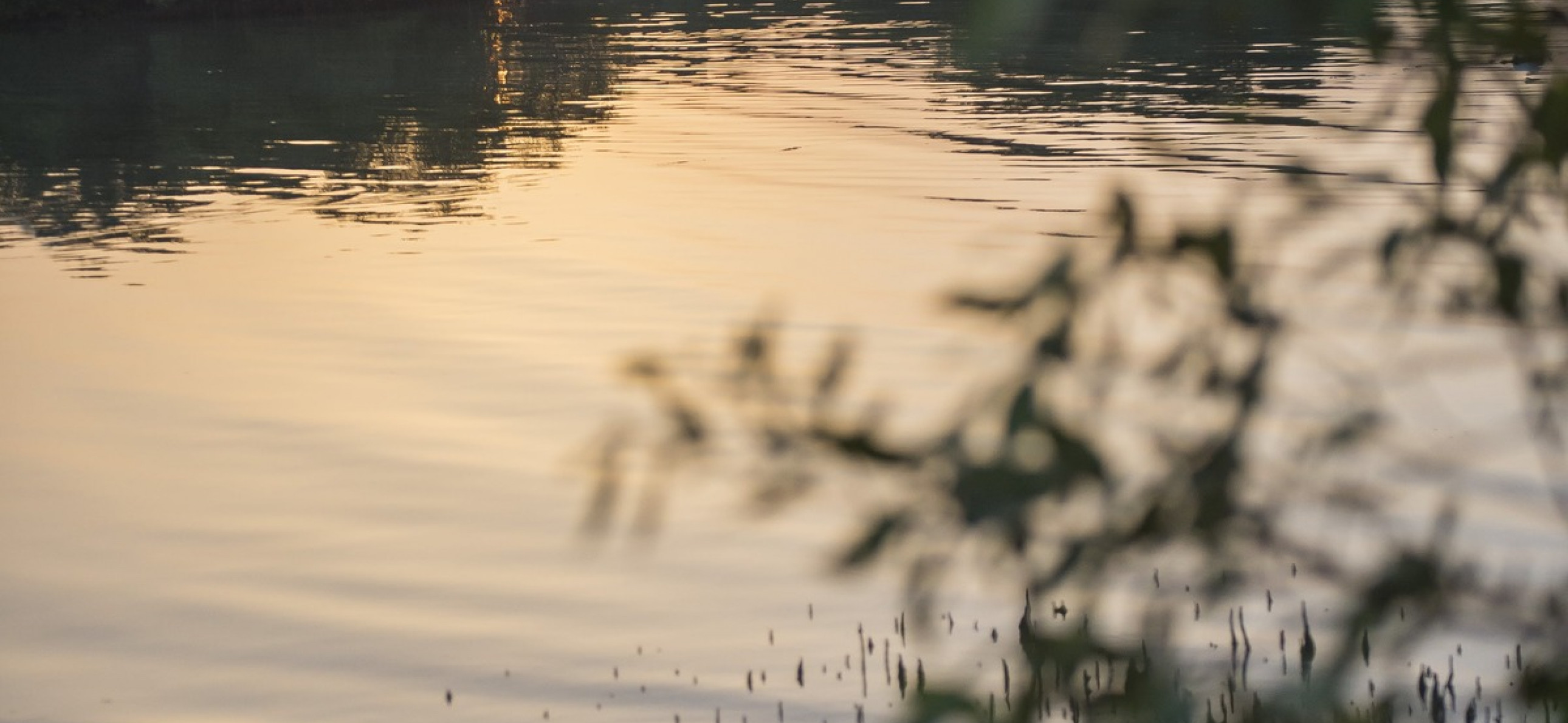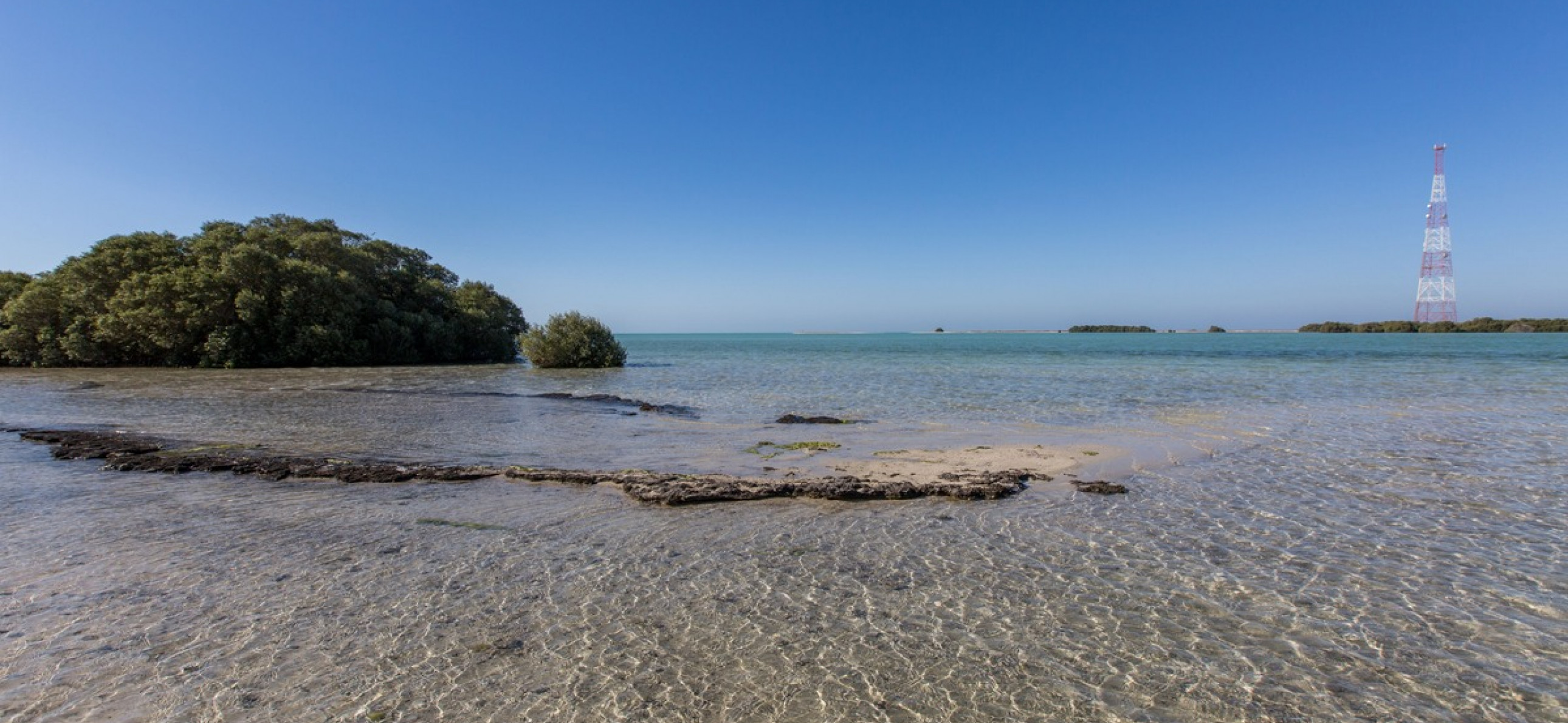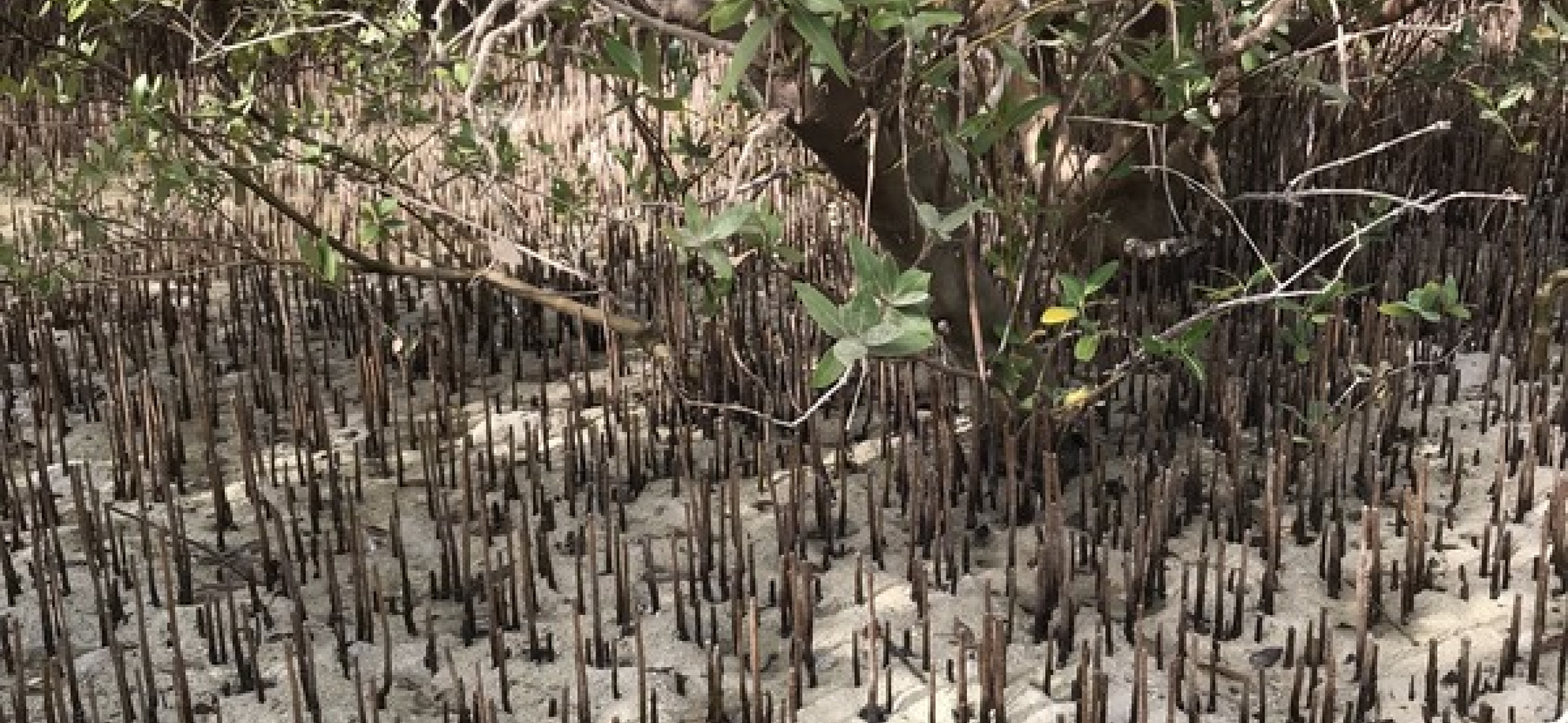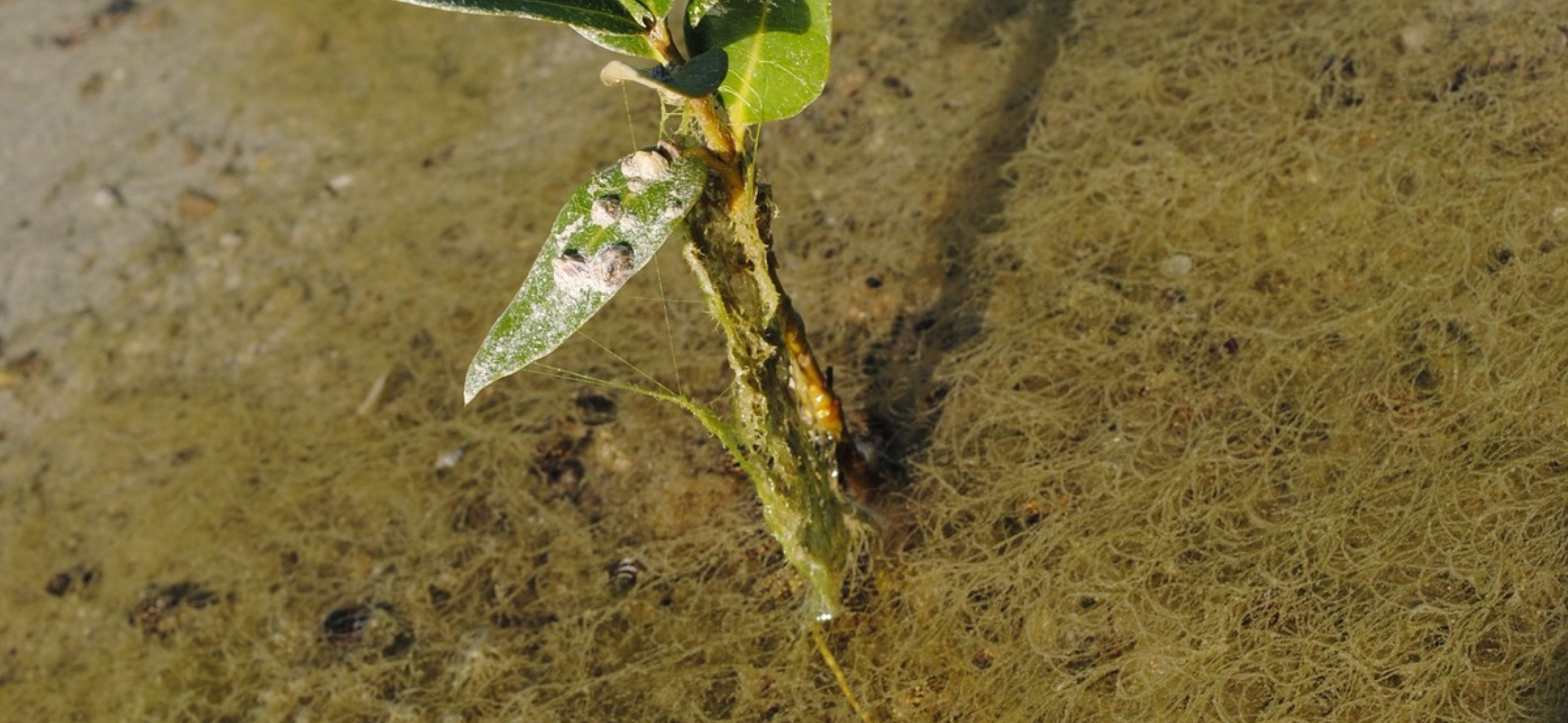Scientific Name: Avicennia marina
Arabic Name: Qurm قرم
IUCN Red List Endangered Status: Least Concern
The grey mangrove (Avicennia marina) is named after Avicenna or Ibn Sina (AD 980-1037), one of the most significant Islamic philosopher-scientists. It is a mangrove tree which can thrive in both high salinity and freshwater habitats.
Although the grey mangrove is one of the most common species in the UAE, it is one of the few mangrove species found in the coastal areas of the Arabian Peninsula, and mainly thrives in sabkha habitats.
Grey mangroves grow into shrubs or trees and blossom small white to golden-yellow flowers which yield heart-shaped fruit from January to March. Yet, how do grey mangroves deal with all the salty seawater? Well, these unique ecosystems are amazingly adaptable. Excess salt absorbed through its roots is excreted from leaves so if you lick the underside of leaves, they taste salty!
Mangrove roots can also breathe! The roots are shaped like breathing tubes which allow them to absorb oxygen when submerged by daily tides. However, oxygen cannot reach the roots if they clogged or submerged for too long. For this reason, the rise of sea-level associated with climate change could serve as a threat to the long-term survival of mangroves.
The species has magnificent properties useful to animals and humans. Its bark is used to treat scabies and has antimicrobial as well as tanning properties. Its flowers are used in perfumes and its tree leaves can be used to soothe toothaches. Its leaves and seeds provide food for camels and other animals too.
Mangroves in the region are home to the endemic, endangered, Arabian Collared Kingfisher. They provide nesting sites for the bird, with only up to 55 breeding pairs of birds in the UAE and Oman left.
While the grey mangrove is under threat from climate change, it protects us from its impacts. It acts as a barrier to floods and storm surges. When mangroves are cut down, they stop acting as natural barriers to coastal areas and release stored carbon dioxide into the atmosphere. This local beauty is also under threat from coastal development for purposes of agriculture, housing, and infrastructure.
These trees that protect us, need our protection too. See how you can help.

